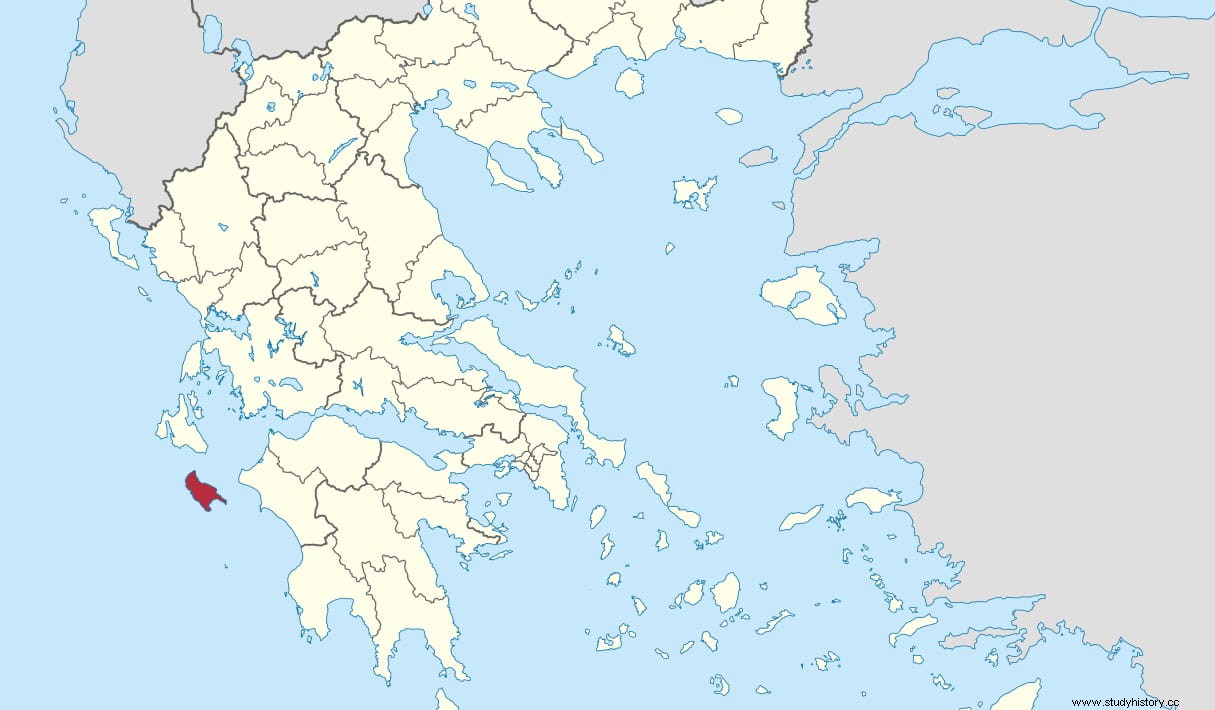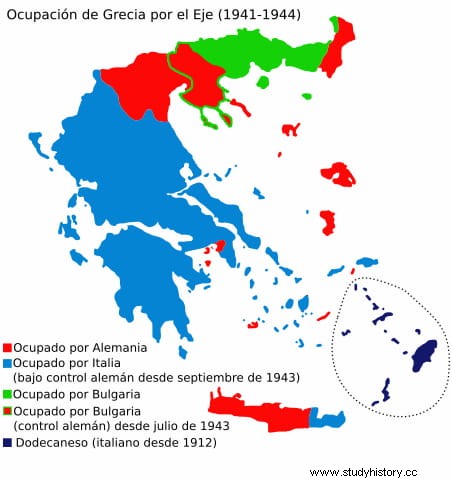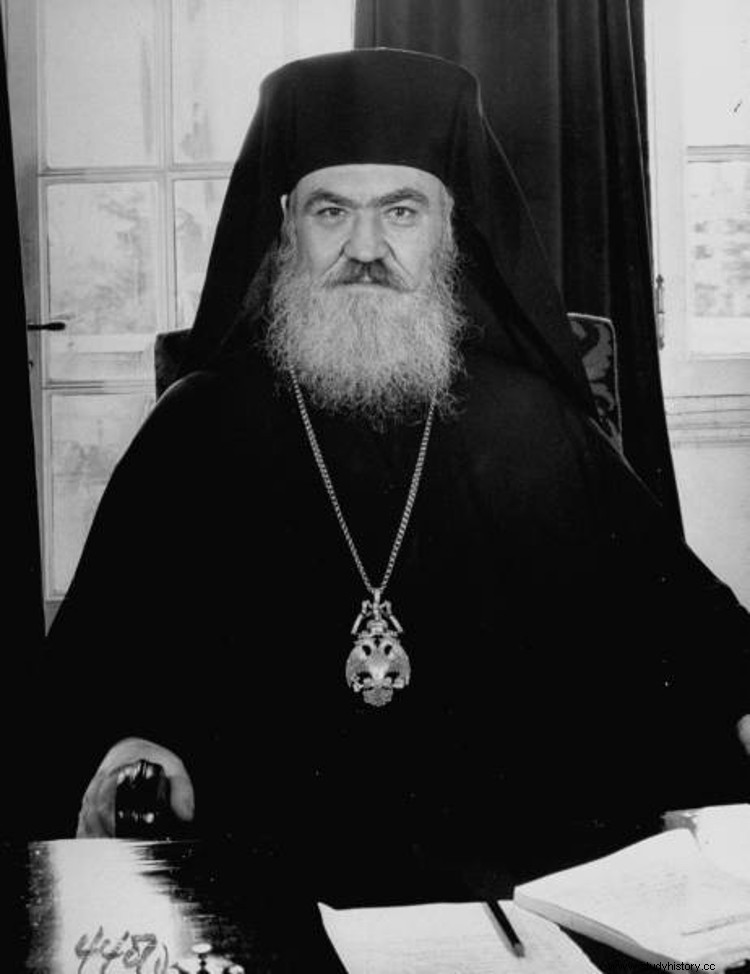The name of Demetriou Chrysostomos will not mean anything to most people. He was the Orthodox bishop of the metropolis (religious jurisdiction) of Zante, a Greek island in the Ionian Sea, who has gone down in history as a hero along with the local mayor, Loukás Karrer, for having defied the Nazis by disobeying his order of hand over members of the insular Jewish community to the SS.
Zante (Zakynthos in the original version) is named after Zacinto, master of Arcadia and son of Dardano (whom Zeus fathered with the Pleiad Electra, daughter of Atlas) who was king of Phrygia and founder of Troy. The island, which is already mentioned in The Odyssey , is a piece of land about 40 kilometers long by 20 wide that add up to 409 square kilometers famous because Dionisio Solomos, author of the Greek anthem, was born there and because of that wonderful enclave that is Navagio Bay.
Reading Gerald Durrell's books about his childhood in neighboring Corfu, it is hard to imagine that a place as peaceful as the Ionian archipelago could see the leaden heat of the afternoon and the continuous song of cicadas interrupted by war drums and footsteps. of military boots, but if something precisely characterizes war it is that it breaks the peace of any corner, however calm it may be; if it happened to the paradisiacal enclaves of the Pacific with more reason in a place as close as that one.

And so, on April 6, 1941 the Wehrmacht began the invasion of the country in collaboration with the armed forces of Italy and Bulgaria, dividing the territory into three parts:the Italians kept two thirds (including the Dodecanese, which they had since 1912) and the Bulgarians annexed almost the entire northwest while the Germans reserved Athens, Thessaloniki, the center of Macedonia, Crete, the Aegean islands and the border with Turkey.
Things changed when Rome surrendered to the Allies in the fall of 1943 and the Germans had to fill their gap; We already told about it in the article dedicated to the Cephalonia Massacre. The fact is that from then on the deportations of Jews started in May of that year in the Bulgarian zone increased. In Greece there were two groups of Jews:on the one hand the Romaniotes, descendants of those who had settled there, in a dispersed way, since Antiquity; on the other, the Sephardim, some 50,000 whose ascendants were those expelled from Spain and Portugal and who were concentrated in Thessaloniki.
Most of the latter ended up in Auschwitz and Treblinka, since that city was administered directly by the Germans. The Romaniots of the former Italian zone were luckier initially because Damaskinos, the Archbishop of Athens, who had clashed heavily with the Teutonic authorities, had ordered the clergy to protect the Jewish community and even had false baptismal certificates printed for them. Other prelates followed the example of Damaskinos (who would be Prime Minister after the war), which allowed the salvation of a small but considerable percentage of Jews.

The case of Zante was exceptional because all 275 of the island were freed there, and it was also thanks to the decisive intervention of a bishop; in this case, the aforementioned Chrysostomos. He was 54 years old and must have had an unpleasant surprise at the end of the summer of 1944, when he saw three German ships anchor in the port with a sinister cargo:2,000 Jews from Corfu and 400 from Cephalonia, to whom those from Zante had to be added to be transferred to Patras, the third largest Greek city and the most important port on the western coast, where they would be put on trains bound for the death camps.
A year earlier, on September 9, 1943, the Italians had left and the Germans arrived in their place. Their commander, Alfred Lüt, had called the mayor, Loukás Karrer, to compile a list of the identities and addresses of all the members of the Jewish community, so that when his men landed they could arrest them without delay. But he went to the bishop, who decided to act as a mediator (he spoke German having studied in Munich) and ask that the order be suspended.

When the Nazi official ignored the religious's compliments and insisted on the list, the priest handed him a piece of paper on which only two names could be read:Chrysostomos and Karrer. Both refused to collaborate and warned that if the arrests proceeded they would have to take them too. The daring rudeness unsettled the commander, who asked his superiors for instructions, which gave him time to take preventive measures.
Because the bishop and the mayor had not sat idly by and, after warning Moses Ganis, the Hebrew leader, of the dire situation, they coordinated with him an unusual operation to save their people:everyone had to leave their homes as soon as possible. with the bare minimum to take refuge in the homes of Christian neighbors in the villages and farms in the interior of Zante, dividing themselves up as if they were relatives.
Unbelievably, it worked and although the Germans were on the island for several months, no one gave them away. When the course of the war began to pose an imminent danger to the occupying forces, faced with the unstoppable advance of the Red Army, the invaders re-embarked and left; days later, on September 12, 1944, the island was liberated. However, today there are none of the survivors, who emigrated to Athens and Israel after an earthquake that shook the region in 1953, destroying the neighborhood in which they lived.
In 1978 Chrysostomos and Karrer (like Damaskinos of Athens) would be distinguished with the title of Righteous Among the Nations that the Yad Vashem (the Israeli institution created to maintain the memory of the victims of the Holocaust) awards to the Gentiles who saved Jews from the Shoah.
Fonts
The Holocaust in Greece/Short history of the jewish communities in Greece/Yad Vashem /The Second World War (Henri Michel)/The agony of greek jews, 1940-1945 (Steven B. Bowman)/A hidden child in Greece. Rescue in the Holocaust
